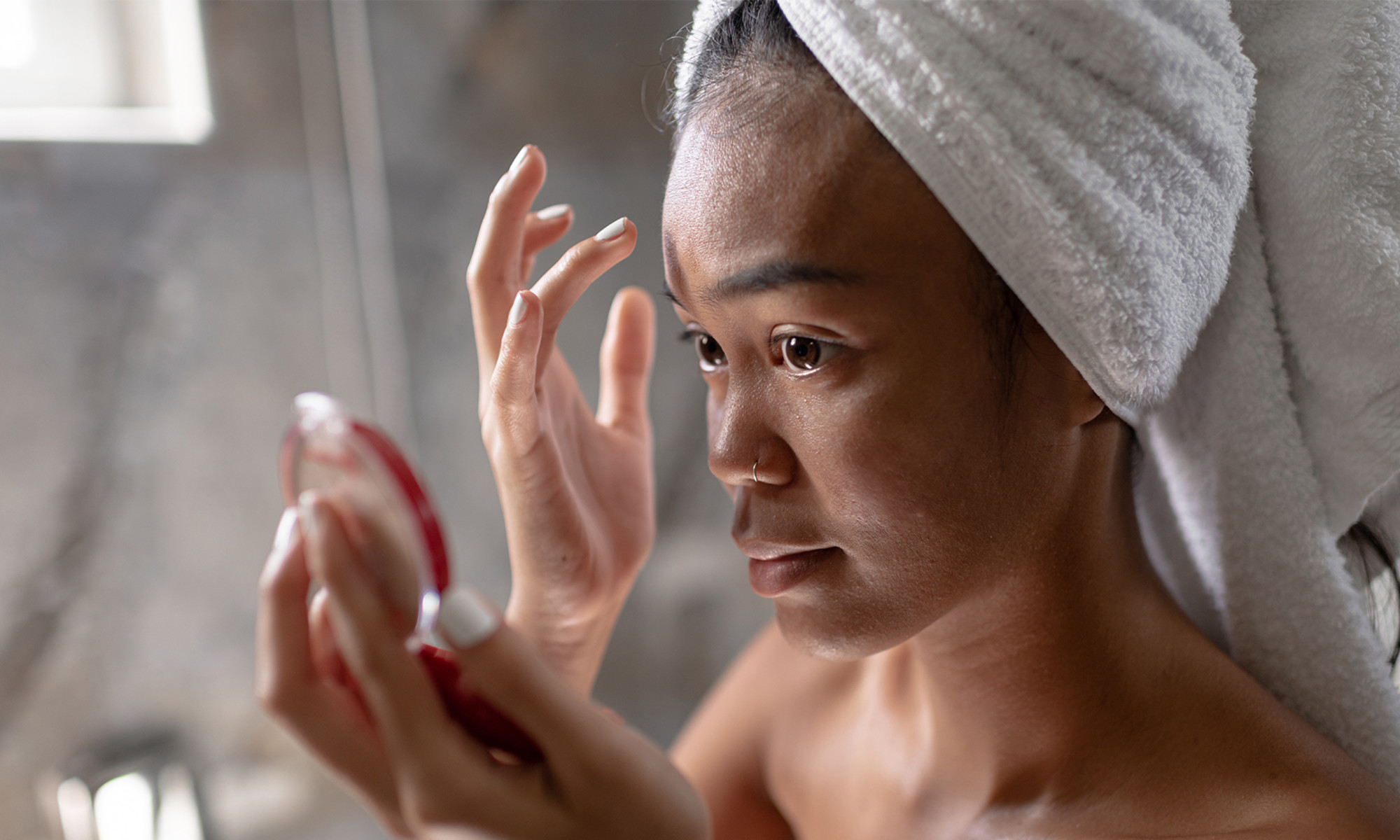How To Amp Up Energy In Your Skin Cells – Because, Yes, It’s Possible
You may or may not already know this, but your cells require a constant supply of energy to function properly. Here's how to get them that energy.


mbg Beauty Director
mbg Beauty Director
Alexandra Engler is the beauty director at mindbodygreen and host of the beauty podcast Clean Beauty School. Previously, she's held beauty roles at Harper's Bazaar, Marie Claire, SELF, and Cosmopolitan; her byline has appeared in Esquire, Sports Illustrated, and Allure.com.
Image by Atolas / Stocksy July 2, 2023 You may or may not already know this, but your cells require a constant supply of energy to function properly. Yes, this includes cells that make up the skin as well. With age or due to environmental circumstances, that energy may wane. When the energy slows, our body isn’t as able to produce as many of the things that keep our skin looking vibrant, such as collagen, elastin and hyaluronic acid. This is why many modern skin care tools and technologies are all about how to improve cellular energy by supporting mitochondrial function and ATP production. 
Advertisement
This ad is displayed using third party content and we do not control its accessibility features.
First things first, let’s go over what those even are. Mitochondria are the powerhouse of your cells (if you knew that already, your freshman year science teacher is beaming). Adenosine triphosphate (ATP) is energy’s currency—it’s a molecule that carries energy around, fueling cells’ functions. So what are some of the products and tools that can boost your ATP and mitochondrial function? The three big ones here.Coenzyme q10
Coenzyme q10 is most famous for its role as an antioxidant (a.k.a. has the ability to neutralize free radicals), but it does so much more than that.
Your cells need CoQ10 to produce energy1. Specifically, it's used in the mitochondria, where it helps transport electrons along energy pathways. The energy produced by these pathways is then used for normal cellular functions, including those involved in skin health.
Using it topically can help give your skin cells a boost in their natural levels. Research shows that applying it as part of a formulation significantly improved levels found in skin cells1—while also boosting the skin's free radical-fighting abilities.
Advertisement
This ad is displayed using third party content and we do not control its accessibility features.
LED technology
LED masks, wands and facials have become increasingly popular as of late. But lots of people don’t really know exactly how they work (and to be fair, neither do researchers.) From what we do know, LED tools have the ability to influence mitochondrial health and ATP production.
“I am a fan of LED therapy. It can help rejuvenate the skin, it can create smoothness, elasticity, and improve the overall appearance of your skin,” says triple-board certified dermatologist Mamina Turagamo, M.D. One way it does this is through collagen production itself: “It does this by helping build collagen, and also reduces the enzyme that breaks down collagen,” she says.
But it also improves cellular energy: “LED can also help promote healthy tissue by improving the production of ATP so our cells are creating more energy. This can help with tissue maintenance and repair,” she says.
However she notes that “the problem is that red light therapy tools aren't standardized so it’s hard to tell which ones are better than others. I do know that the devices used in offices and spas are stronger. However, the ones used at home are easy, accessible and can still make a positive impact on your skin.”
Here’s our tried and tested selects for the best LED devices and masks to help you find quality ones.
Microcurrent
Another sophisticated at home technology, microcurrent devices (like those found here) can stimulate ATP production in the body. The tools work by emitting low-level electrical currents into the skin that are very similar to the ones your brains produce.
"Our brains use currents to communicate through our neurological pathways, where it's constantly sending signals. What we're doing with this technology is mimicking those currents and delivering them to our facial muscles. The thing is, the facial muscles can't tell whether the signal is coming from the brain or this device,” says biomedical engineer and holistic skin care expert Pooja Johari, M.S., founder of 7E Wellness.
And part of what these electrical currents signal is to produce more ATP in the skin and muscles. "What we do with microcurrent is replenish and boost the ATP and therefore, the collagen and elastin," she says.

 Kass
Kass -v1646695196476.jpg?1148x800)


























.jpg&h=630&w=1200&q=100&v=6e07dc5773&c=1)






